Wildflowers, Grasses and Other Nonwoody Plants
Media
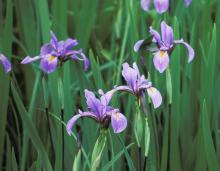
Species Types
Scientific Name
Iris virginica
Description
Ten species of iris grow wild in our state, but only four of them are native. Of our native irises, this one is the most common. But drainage “improvements” are eliminating the habitat of this beautiful wetland wildflower.
Media
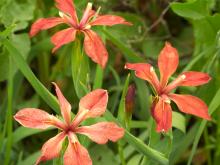
Species Types
Scientific Name
Iris fulva
Description
This attractive, copper-colored iris is gaining in popularity as a garden plant even though its numbers are declining in the wild. Like many other native plants, copper iris is hardy, low-maintenance, and has few pest or disease problems.
Media
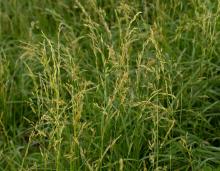
Species Types
Scientific Name
Festuca arundinacea
Description
You’ve seen it a million times, now learn to identify it! Technically an exotic invasive plant, tall fescue is practically everywhere, from lawns to levees, and from pastures to (unfortunately!) prairies.
Media

Species Types
Scientific Name
Lithospermum canescens
Description
Hoary puccoon's small, tubular flowers arise on spirally condensed stalks that uncoil and elongate as more flowers open toward the tip. Occurs nearly statewide in prairies, glades, pastures, roadsides, and other open areas.
Media
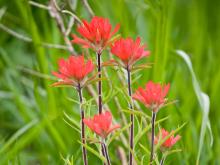
Species Types
Scientific Name
Castilleja coccinea
Description
The bright red of Indian paintbrush colors our native prairielands, reminding us (through its name) of the Osage, Kansa, Pawnee, and many other people who lived in these prairies before the pioneers.
Media

Species Types
Scientific Name
Viola pedata
Description
In springtime, bird's-foot violet can make a glade or bluff top heavenly with its pretty lavender and purple "faces." When you see your first big colony of bird's-foot violets, you will probably never forget it.
Media

Species Types
Scientific Name
Hesperis matronalis
Description
Dame’s rocket has showy clusters of purple flowers that bloom atop waist-high stalks in April, May, and June. A native of Eurasia, this member of the mustard family was introduced as a garden flower. It commonly escapes from cultivation.
Media
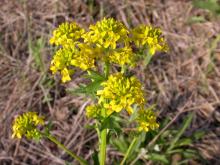
Species Types
Scientific Name
Barbarea vulgaris
Description
Yellow rocket is a mustard native to Eurasia that was introduced long ago and today is found across North America. The mustard family used to be called the Cruciferae, because of the cross shape formed by the four petals.
Media
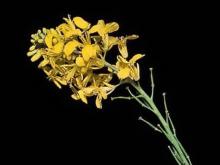
Species Types
Scientific Name
Brassica nigra
Description
Next time you breeze past weedy black mustard on the highway or spot it in a fallow field, think of how important this and other mustards are to the world economy – and to your dinner table.
Media

Species Types
Scientific Name
Acorus calamus (syn. A. calamus var. calamus)
Description
At a glance, the upright sword-shaped leaves of sweet flag make it resemble cattails. Like them, sweet flag lives in wet soils. But the flower heads are distinctive, and details of the leaves set them apart, too.
See Also
About Wildflowers, Grasses and Other Nonwoody Plants in Missouri
A very simple way of thinking about the green world is to divide the vascular plants into two groups: woody and nonwoody (or herbaceous). But this is an artificial division; many plant families include some species that are woody and some that are not. The diversity of nonwoody vascular plants is staggering! Think of all the ferns, grasses, sedges, lilies, peas, sunflowers, nightshades, milkweeds, mustards, mints, and mallows — weeds and wildflowers — and many more!





















